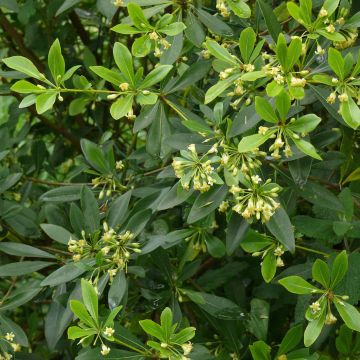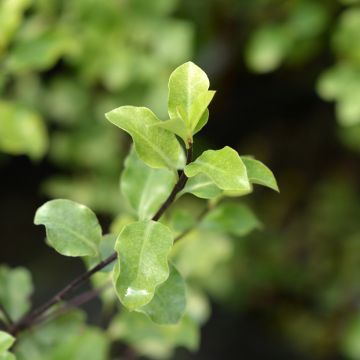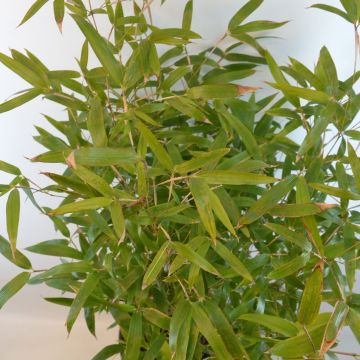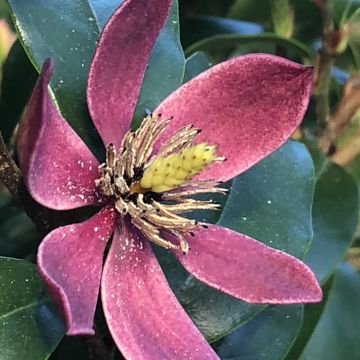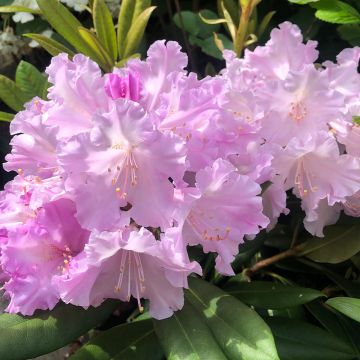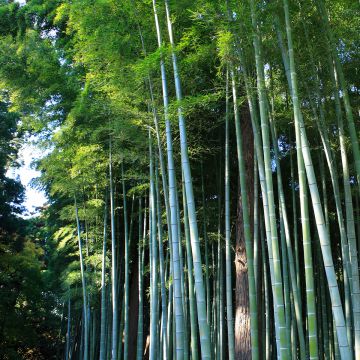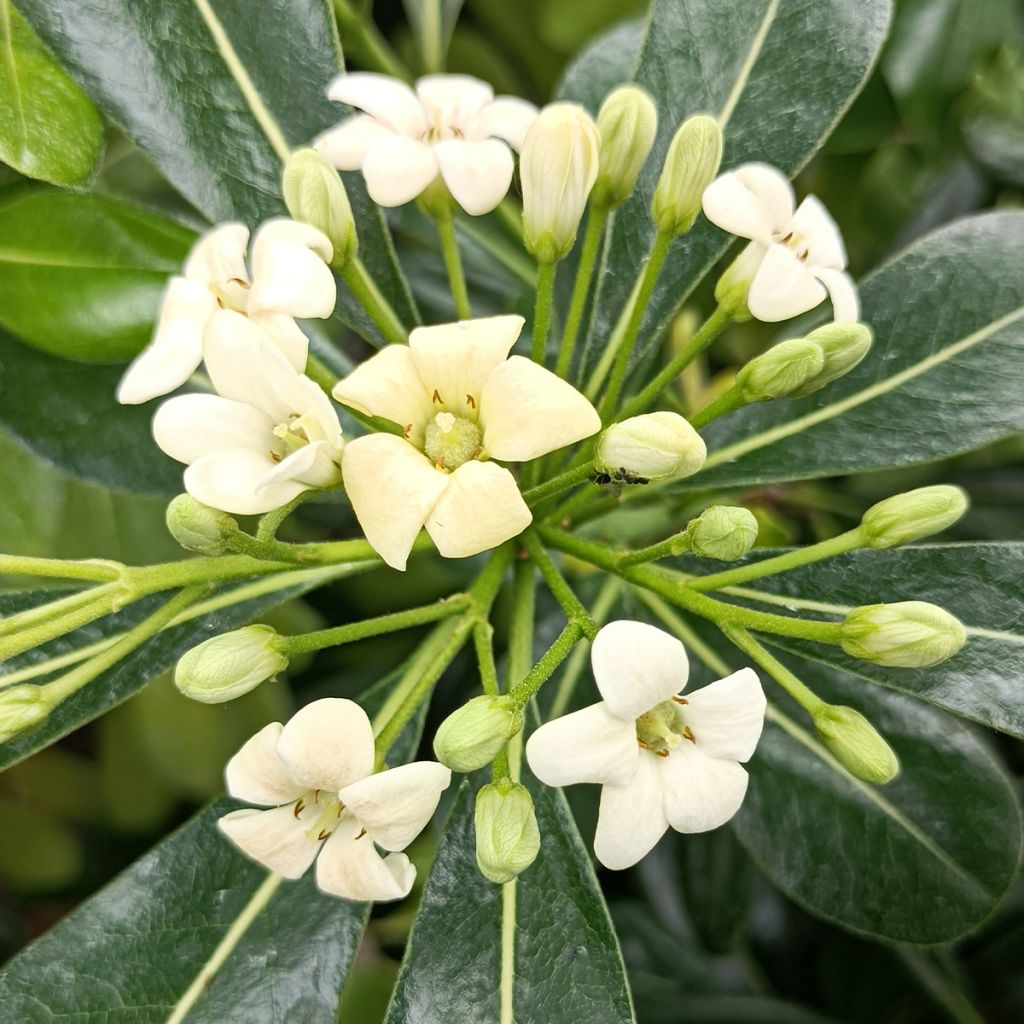

Pittosporum tobira - Japanese Pittosporum


Pittosporum tobira - Japanese Pittosporum
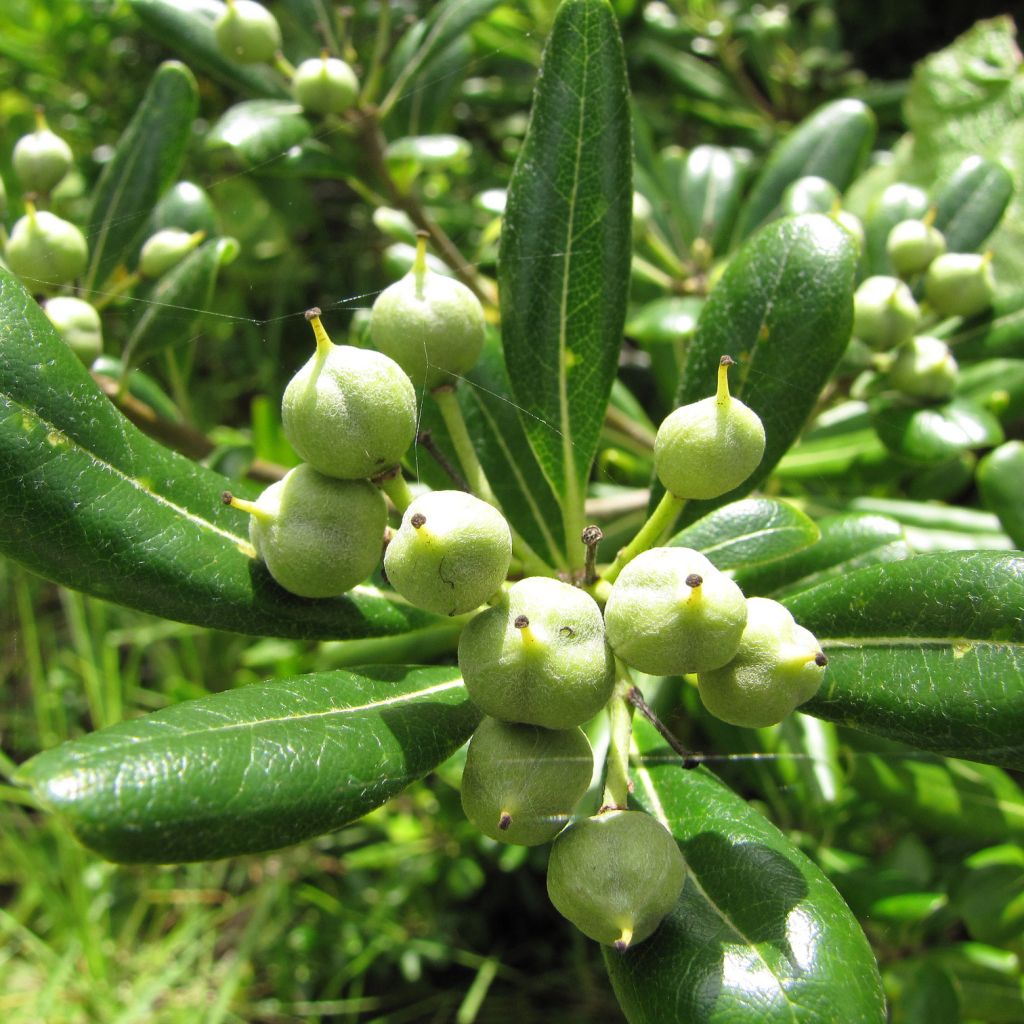

Pittosporum tobira - Japanese Pittosporum


Pittosporum tobira - Japanese Pittosporum
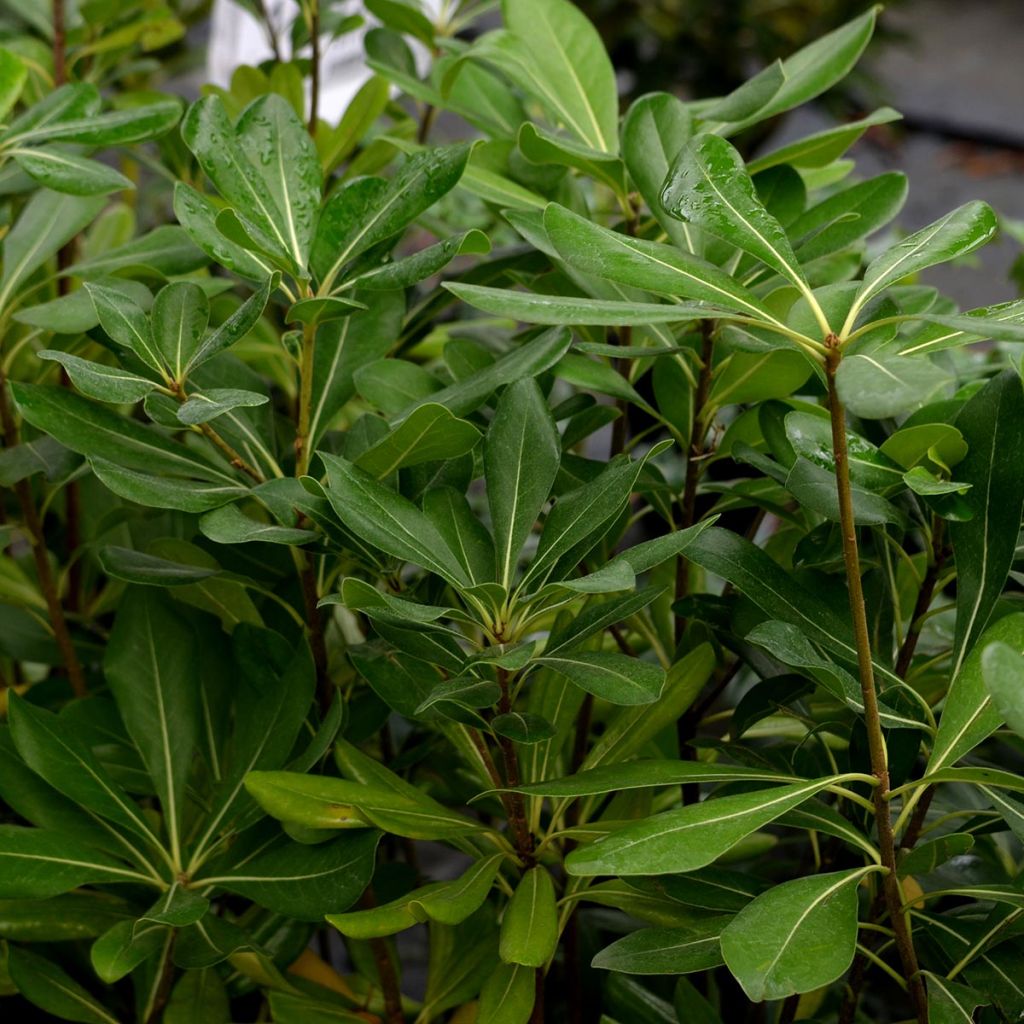

Pittosporum tobira - Japanese Pittosporum
Pittosporum tobira - Japanese Pittosporum
Pittosporum tobira
Japanese Pittosporum, Australian laurel
This item cannot be shipped to the selected country
Delivery charge from €5.90
Delivery charge from €5.90
Delivery charge from €5.90
More information
Schedule delivery date,
and select date in basket
This plant carries a 24 months recovery warranty
More information
We guarantee the quality of our plants for a full growing cycle, and will replace at our expense any plant that fails to recover under normal climatic and planting conditions.
From €5.90 for pickup delivery and €6.90 for home delivery
Express home delivery from €8.90.
From €5.90 for pickup delivery and €6.90 for home delivery
Express home delivery from €8.90.
From €5.90 for pickup delivery and €6.90 for home delivery
Express home delivery from €8.90.

Does this plant fit my garden?
Set up your Plantfit profile →
Description
The Pittosporum tobira is a compact, highly floriferous bush with thick, shiny green evergreen foliage. It is covered in white bell-shaped flowers with a hint of orange fragrance. It is used as a hedge by the seaside, as its foliage resists salt spray.
Originally from Japan, the pittosporum forms a dense bush that reaches a height of 4 to 5m (13.1 - 16.4ft) and is hardy down to -5°C (23°F). It has evergreen, alternate, entire, ovate, thick, shiny, dark green leaves 5cm (2in) long. The white or yellowish-green bell-shaped flowers are highly fragrant, with a diameter of 3cm (1.2in), and appear in terminal umbels on the foliage in May.
The slow-growing Pittosporum tobira requires fertile, dry, not too chalky, well-drained soil in a warm, sunny, and protected position, sheltered from prevailing winds. It is best to cultivate it in a pot when the winter climate is too cold. In spring, before the vegetation resumes, it can be pruned to maintain a harmonious shape and remove dead or diseased wood. It can withstand severe pruning if necessary.
The Pittosporum tobira can be planted in borders, as a topiary, in a Mediterranean hedge, paired with oleanders, bottlebrushes, cassias, and myrtles, or in a container on a terrace to enjoy its delicate fragrance.
Tip: Apply organic fertilizer annually for better flowering. In a pot, pruning is almost unnecessary.
Report an error about the product description
Pittosporum tobira - Japanese Pittosporum in pictures


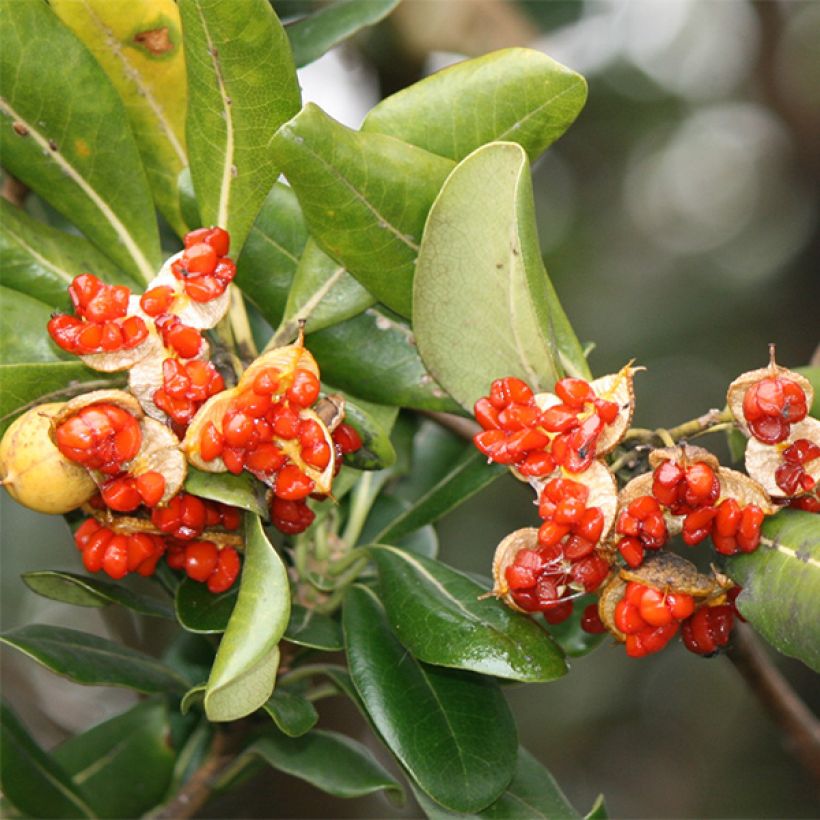

Plant habit
Flowering
Foliage
Botanical data
Pittosporum
tobira
Pittosporaceae
Japanese Pittosporum, Australian laurel
Cultivar or hybrid
Other Pittosporum
Planting and care
The Pittosporum tobira is best planted in spring in a fertile, dry, and well-drained soil. It is not very hardy (-5°C (23°F)), so choose a warm location, in full sun and sheltered from prevailing winds. Mulch the base at planting. Install it along a south-facing wall in regions with harsh winters. In cooler climates cover it with fleece or shelter it in a frost-free veranda for the cold season. To help it branch out during the first years of planting, pinch the young shoots. In adult subjects, trim the branches that appear dishevelled on the clump at the end of the season. It is possible to shape it into a ball or a hedge. Provide good organic fertiliser every year for better flowering.
Planting period
Intended location
Care
-
, onOrder confirmed
Reply from on Promesse de fleurs
Evergreen shrubs
Haven't found what you were looking for?
Hardiness is the lowest winter temperature a plant can endure without suffering serious damage or even dying. However, hardiness is affected by location (a sheltered area, such as a patio), protection (winter cover) and soil type (hardiness is improved by well-drained soil).

Photo Sharing Terms & Conditions
In order to encourage gardeners to interact and share their experiences, Promesse de fleurs offers various media enabling content to be uploaded onto its Site - in particular via the ‘Photo sharing’ module.
The User agrees to refrain from:
- Posting any content that is illegal, prejudicial, insulting, racist, inciteful to hatred, revisionist, contrary to public decency, that infringes on privacy or on the privacy rights of third parties, in particular the publicity rights of persons and goods, intellectual property rights, or the right to privacy.
- Submitting content on behalf of a third party;
- Impersonate the identity of a third party and/or publish any personal information about a third party;
In general, the User undertakes to refrain from any unethical behaviour.
All Content (in particular text, comments, files, images, photos, videos, creative works, etc.), which may be subject to property or intellectual property rights, image or other private rights, shall remain the property of the User, subject to the limited rights granted by the terms of the licence granted by Promesse de fleurs as stated below. Users are at liberty to publish or not to publish such Content on the Site, notably via the ‘Photo Sharing’ facility, and accept that this Content shall be made public and freely accessible, notably on the Internet.
Users further acknowledge, undertake to have ,and guarantee that they hold all necessary rights and permissions to publish such material on the Site, in particular with regard to the legislation in force pertaining to any privacy, property, intellectual property, image, or contractual rights, or rights of any other nature. By publishing such Content on the Site, Users acknowledge accepting full liability as publishers of the Content within the meaning of the law, and grant Promesse de fleurs, free of charge, an inclusive, worldwide licence for the said Content for the entire duration of its publication, including all reproduction, representation, up/downloading, displaying, performing, transmission, and storage rights.
Users also grant permission for their name to be linked to the Content and accept that this link may not always be made available.
By engaging in posting material, Users consent to their Content becoming automatically accessible on the Internet, in particular on other sites and/or blogs and/or web pages of the Promesse de fleurs site, including in particular social pages and the Promesse de fleurs catalogue.
Users may secure the removal of entrusted content free of charge by issuing a simple request via our contact form.
The flowering period indicated on our website applies to countries and regions located in USDA zone 8 (France, the United Kingdom, Ireland, the Netherlands, etc.)
It will vary according to where you live:
- In zones 9 to 10 (Italy, Spain, Greece, etc.), flowering will occur about 2 to 4 weeks earlier.
- In zones 6 to 7 (Germany, Poland, Slovenia, and lower mountainous regions), flowering will be delayed by 2 to 3 weeks.
- In zone 5 (Central Europe, Scandinavia), blooming will be delayed by 3 to 5 weeks.
In temperate climates, pruning of spring-flowering shrubs (forsythia, spireas, etc.) should be done just after flowering.
Pruning of summer-flowering shrubs (Indian Lilac, Perovskia, etc.) can be done in winter or spring.
In cold regions as well as with frost-sensitive plants, avoid pruning too early when severe frosts may still occur.
The planting period indicated on our website applies to countries and regions located in USDA zone 8 (France, United Kingdom, Ireland, Netherlands).
It will vary according to where you live:
- In Mediterranean zones (Marseille, Madrid, Milan, etc.), autumn and winter are the best planting periods.
- In continental zones (Strasbourg, Munich, Vienna, etc.), delay planting by 2 to 3 weeks in spring and bring it forward by 2 to 4 weeks in autumn.
- In mountainous regions (the Alps, Pyrenees, Carpathians, etc.), it is best to plant in late spring (May-June) or late summer (August-September).
The harvesting period indicated on our website applies to countries and regions in USDA zone 8 (France, England, Ireland, the Netherlands).
In colder areas (Scandinavia, Poland, Austria...) fruit and vegetable harvests are likely to be delayed by 3-4 weeks.
In warmer areas (Italy, Spain, Greece, etc.), harvesting will probably take place earlier, depending on weather conditions.
The sowing periods indicated on our website apply to countries and regions within USDA Zone 8 (France, UK, Ireland, Netherlands).
In colder areas (Scandinavia, Poland, Austria...), delay any outdoor sowing by 3-4 weeks, or sow under glass.
In warmer climes (Italy, Spain, Greece, etc.), bring outdoor sowing forward by a few weeks.




































